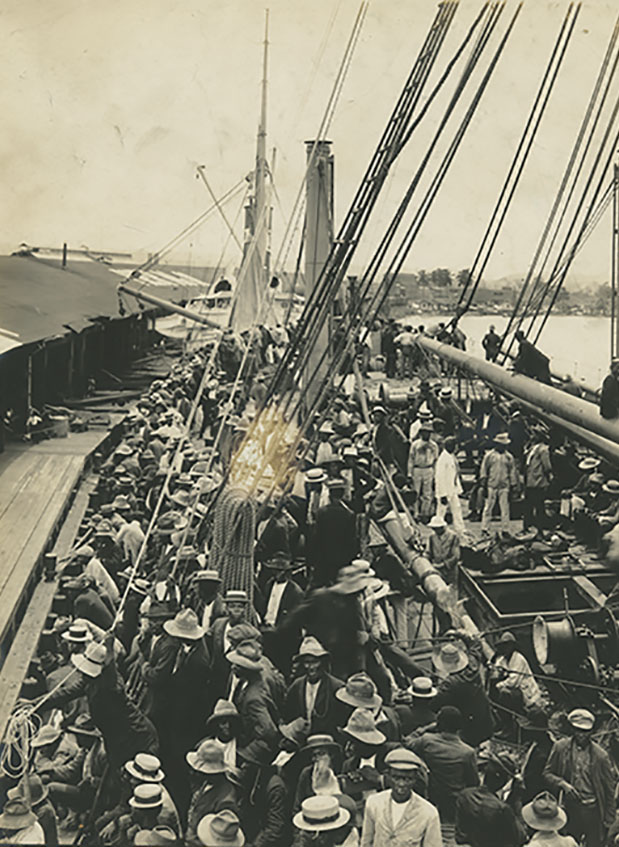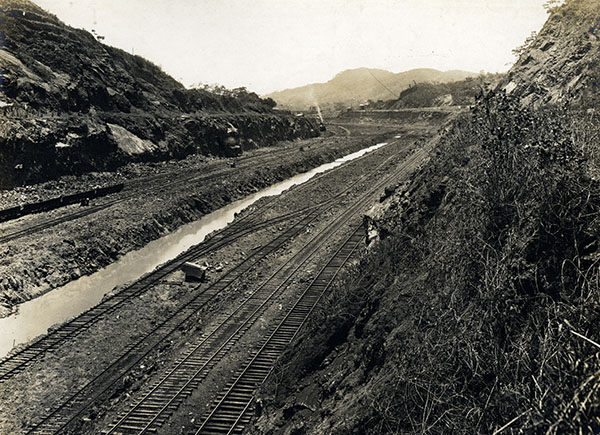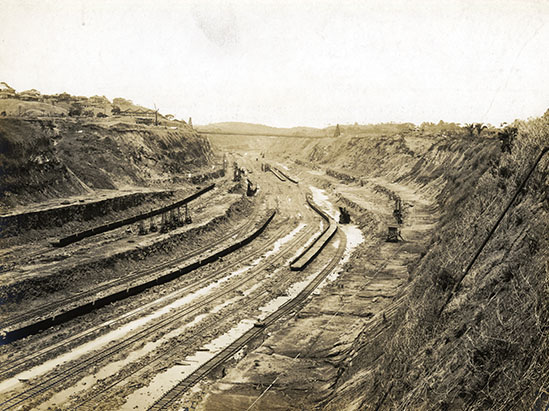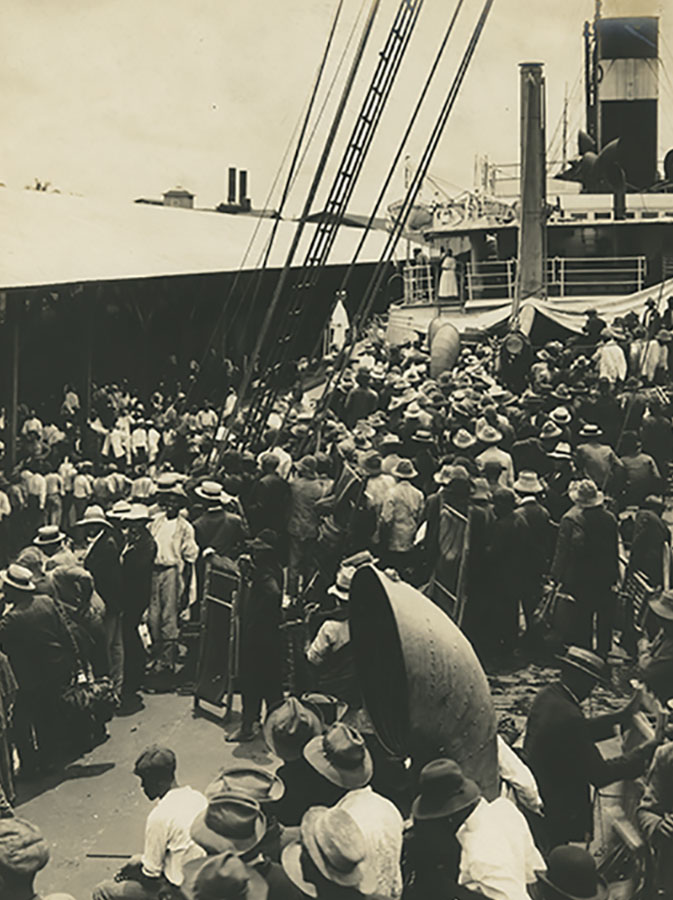The most vital resource in canal construction was an ample supply of manual labor. At the height of construction, as many as 40,000 laborers might be employed at one time. Thousands of immigrants from the Caribbean traveled to the Isthmus in search of better financial opportunities when the French canal project began in the 1880s. When the United States took control of construction, immigrants from Barbados, Jamaica, and St. Lucia comprised the largest group in the workforce.

Barbadian workers arrive in the Canal Zone on the S.S. Ancon
United States administrators separated laborers into two classes: gold roll and silver roll. The gold roll workers, predominantly white U.S. citizens, were labeled as “skilled” and paid in gold. Laborers of the silver roll, typically Black Caribbean immigrants and Afro-Panamanians, were labeled “unskilled” and paid considerably less in the form of local silver currency. The majority of Caribbean immigrants worked as “pick and shovel men,” doing most of the physical labor on the Culebra Cut and earning only ten U.S. cents per hour. The monthly earnings for gold roll employees, who occupied far less dangerous positions, was double that of the silver roll. In addition, gold roll employees received benefits of vacation time and pensions that were not offered to silver roll workers. The white administrators used this racially coded payroll to justify worse treatment of Black workers and uphold discriminatory principles in the Canal Zone.

Culebra Cut, Bas Obispo District
Working and living conditions for Caribbean laborers were harrowing and inhumane. Today, the work of the Black immigrant on the Panama Canal is often described as a form of semi-slavery. They were forced to work nonstop in all weather conditions, including the torrential rain common in the tropical climate. With days spent working in wet clothes, poor sanitary conditions, and inferior medical care, Black Caribbean workers were ravaged by preventable disease. In combining deaths from accidents with those from poor living and working conditions, it is estimated that 15,000 Caribbean immigrants died while building the Panama Canal. This number represents approximately 10% of all Caribbean immigrants in the Isthmus during that time.

Workers encountered constantly wet and muddy terrain
The eventual success of the Panama Canal is often attributed to the United States, but the plan could not have been realized without Caribbean immigrants. This impressive engineering project came at a tremendous human cost. Death during the construction of the Panama Canal was racialized and largely preventable. The trials faced by those workers are part of the complex legacy of the canal, and this exhibit seeks to ensure that they are not forgotten.

Barbadian workers arrive in the Canal Zone on the S.S. Ancon
PREVIOUS SECTION: The Culebra Cut